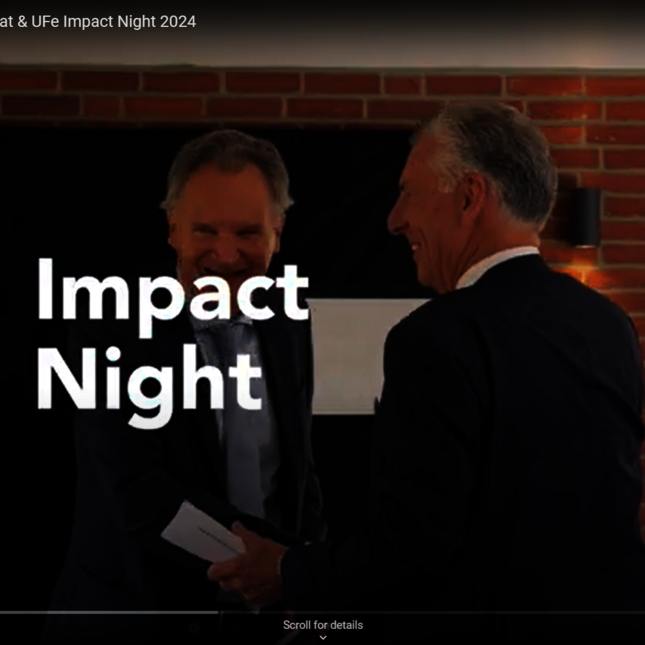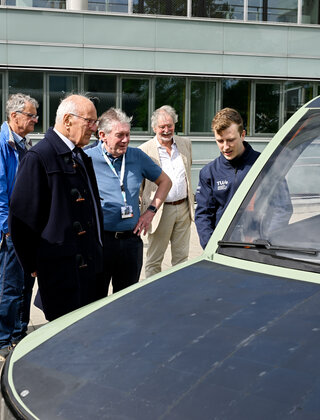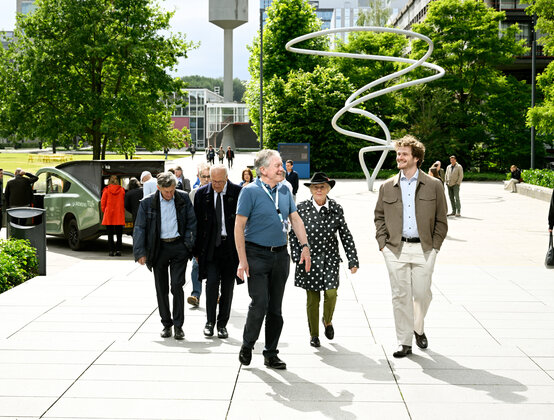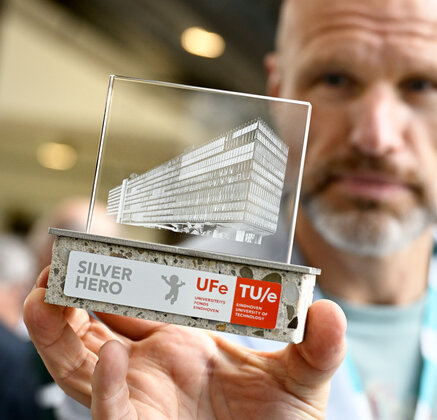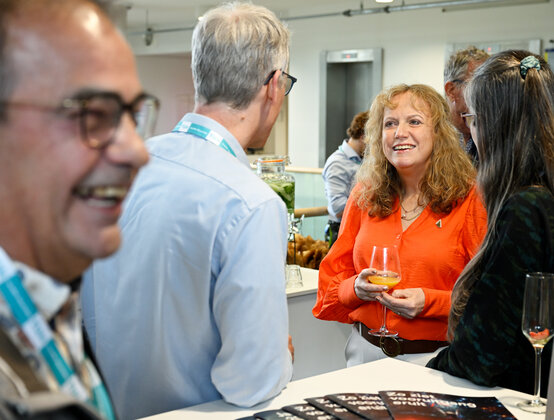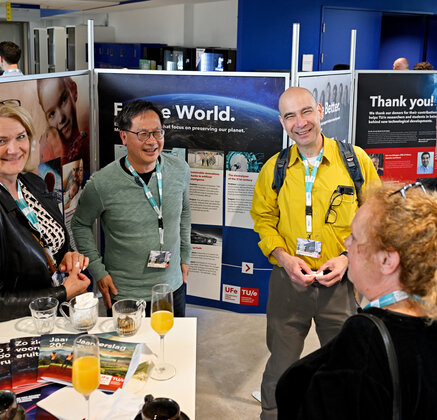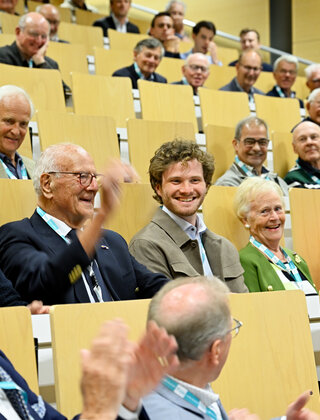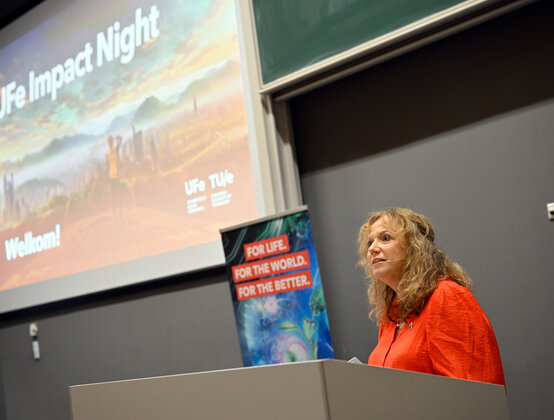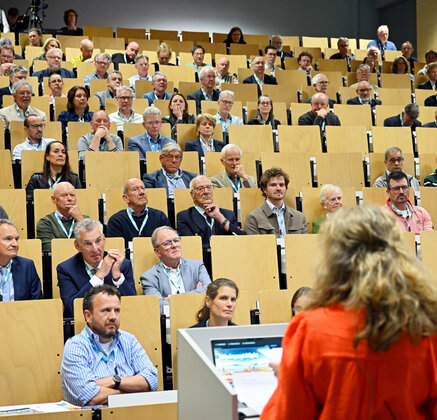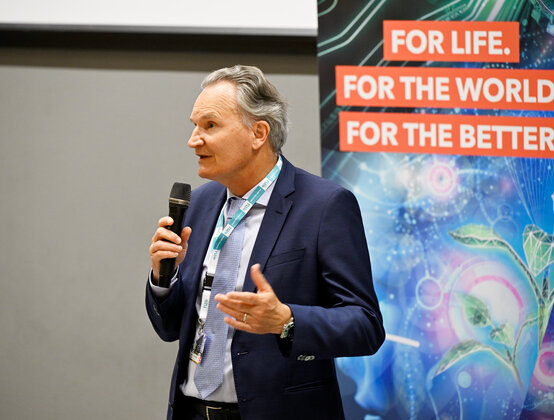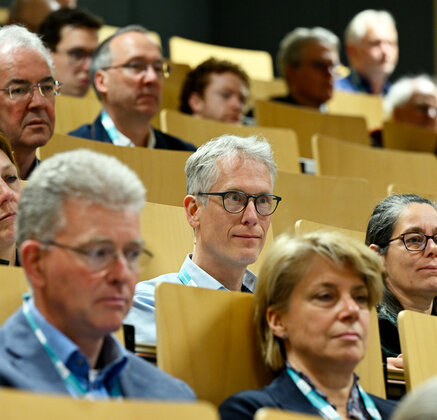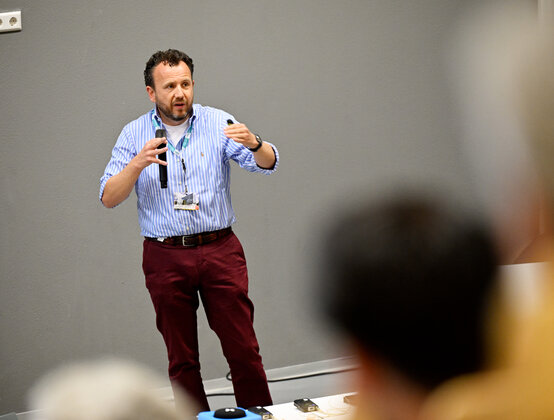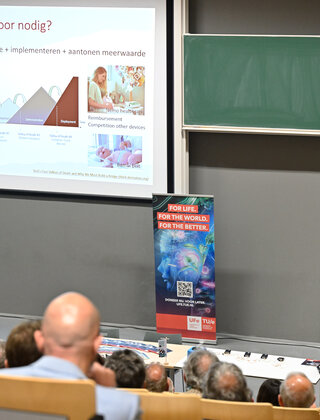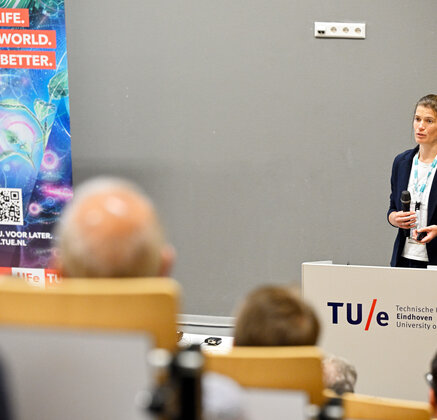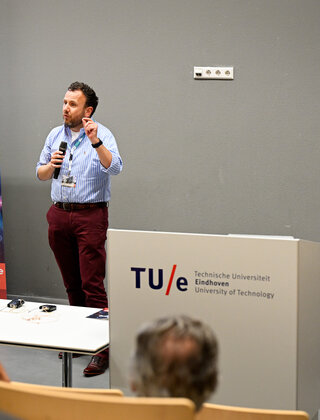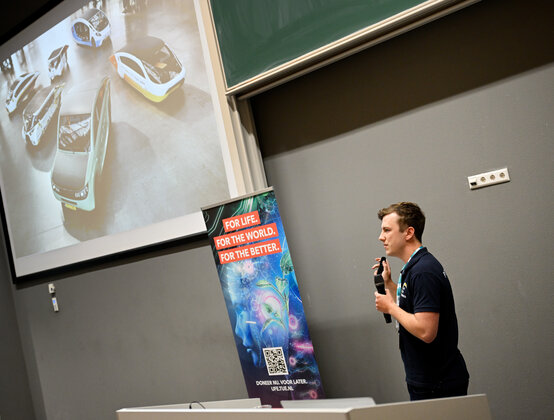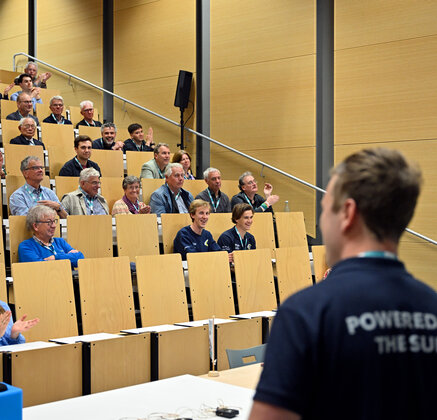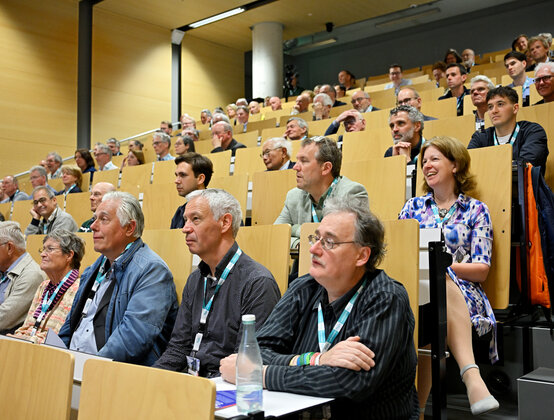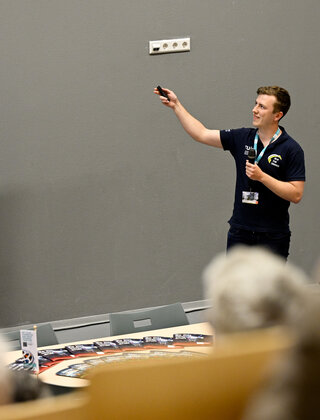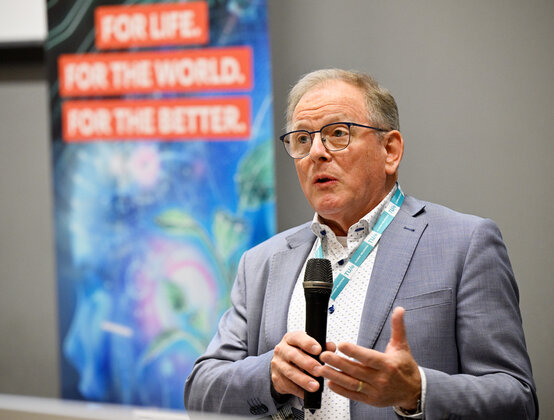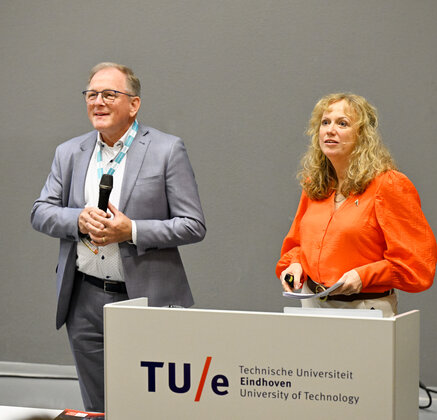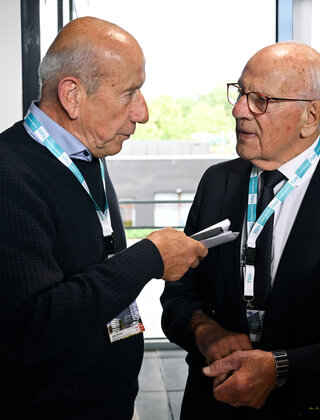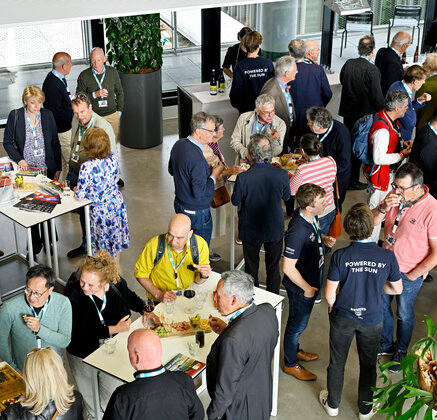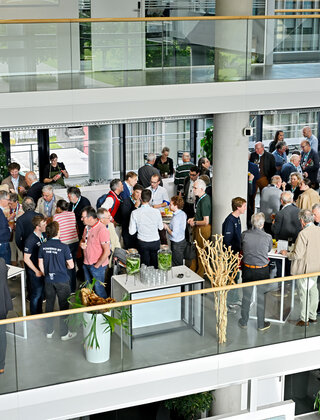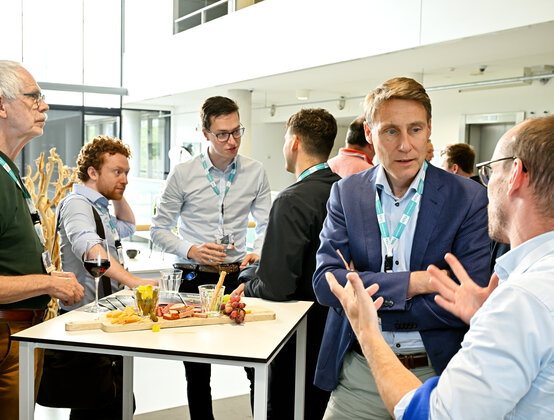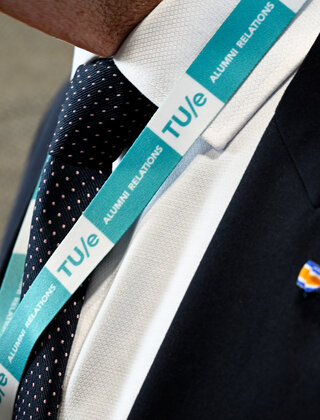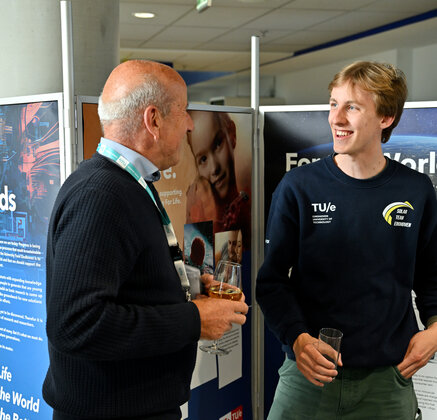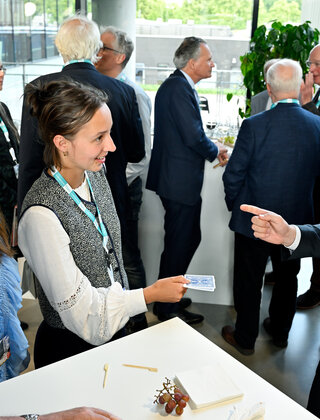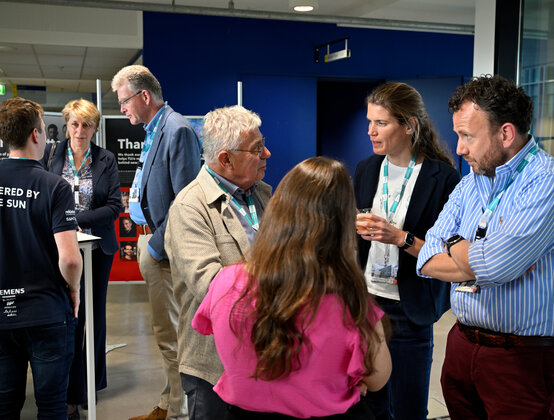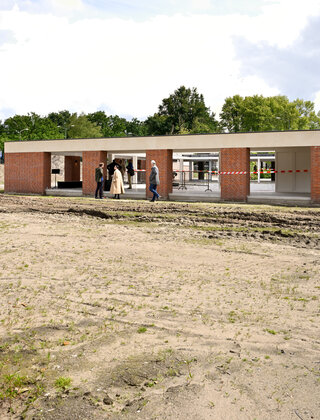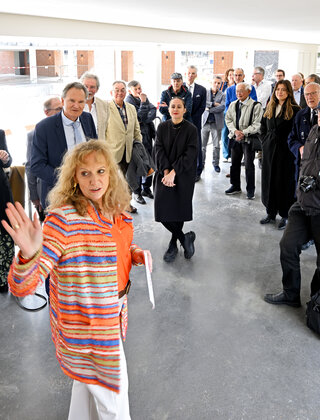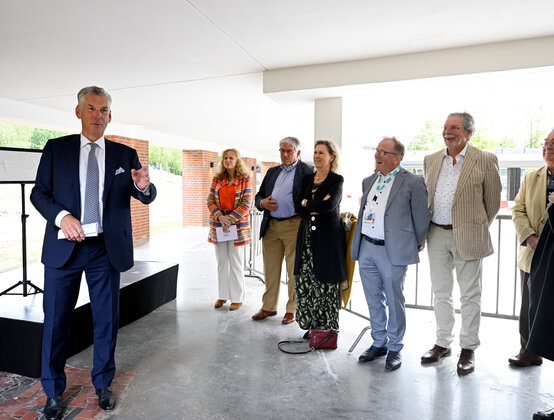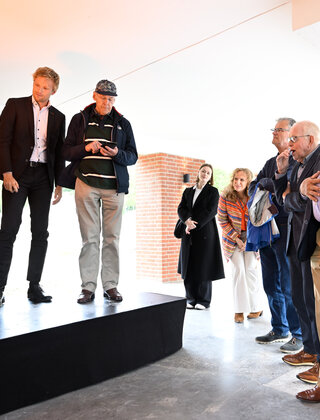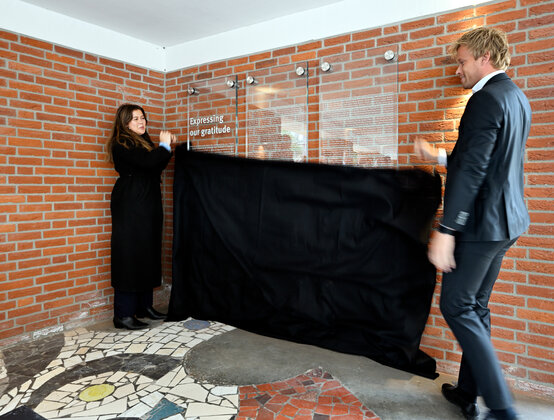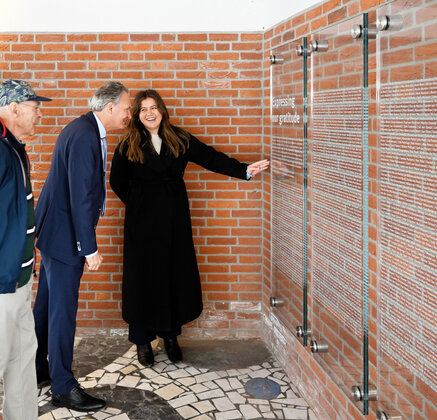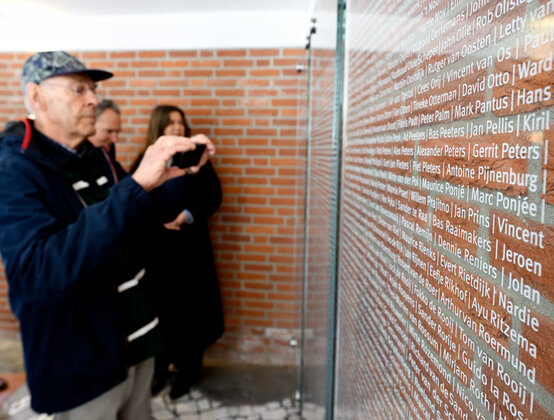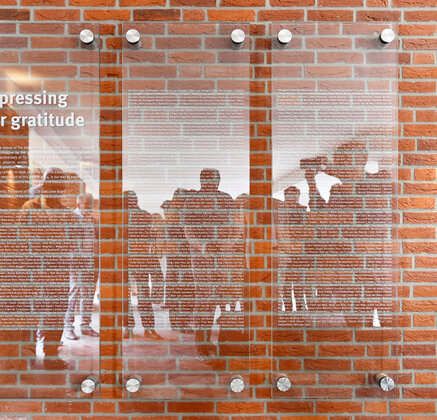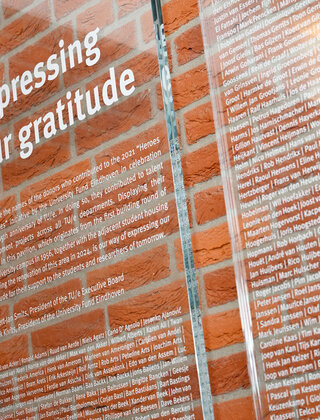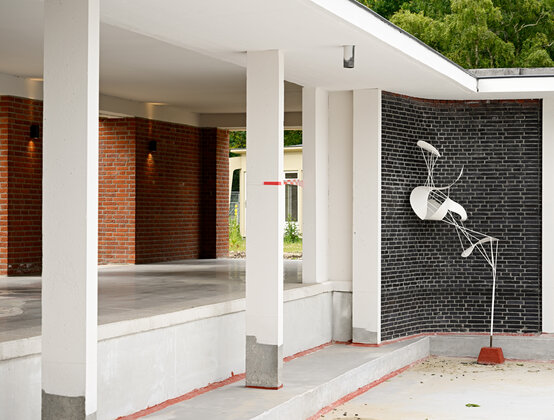UFe Impact Night
An evening of looking back and ahead
After the success of the first Impact Night, the only logical response was to turn it into a recurring event. So, on June 12th we welcomed over 100 guests to update them on the latest developments in fundamental technological science. This time, they were treated to in-depth information on two projects that already reached and even passed the prototyping phase. But the evening started with a tribute to over a thousand people with a special connection to our university.

Heroes for Heroes
In 2021, when Covid still complicated our lives, the TU/e celebrated its 65th birthday. One of the efforts to reinforce the bond between alumni and their alma mater was a campaign called ‘Heroes for Heroes’. Alumni (the heroes from the past and today) were asked to support and encourage the heroes of tomorrow, the then current students. This campaign raised a large amount of money that went towards multiple student development programs. And the encouragements the students received were nothing but heartwarming.
To honor everyone who donated, a beautiful plaque was created with the help of – amongst others – Industrial Design alumna Ayu Ritzema. The plaque was unveiled during a short ceremony with introductions by Robert Jan Smits, chairman of the TU/e Board, Henk Kivits, chairman of the University Fund and Edith Snelders, Team leader Alumni relations and University Fund Eindhoven. Jeroen de Jong, magician with a mission and TU/e alumnus, captivated his audience with a magic trick that ended with an expression of gratitude to all those who contributed.
The impact of funding fundamental research
Robert Jan Smits kicked off the evening with a short reflection on the state of scientific education and threats that loom in our current and future political climate. Interviewed by Edith Snelders, the director of the University Fund, Ton Backx, emphasized the importance of independent funding of projects, especially in their early stages, before the results attract the attention of companies that can fund further development.
Ton also addressed a core strength of the TU/e and our region: cooperation. In all areas of the research funded, TU/e can count on numerous companies and organizations like hospitals that help projects become reality, while researchers provide these partners with insights and new ideas. This way of working has already proven very successful in the past and continues to be just that.
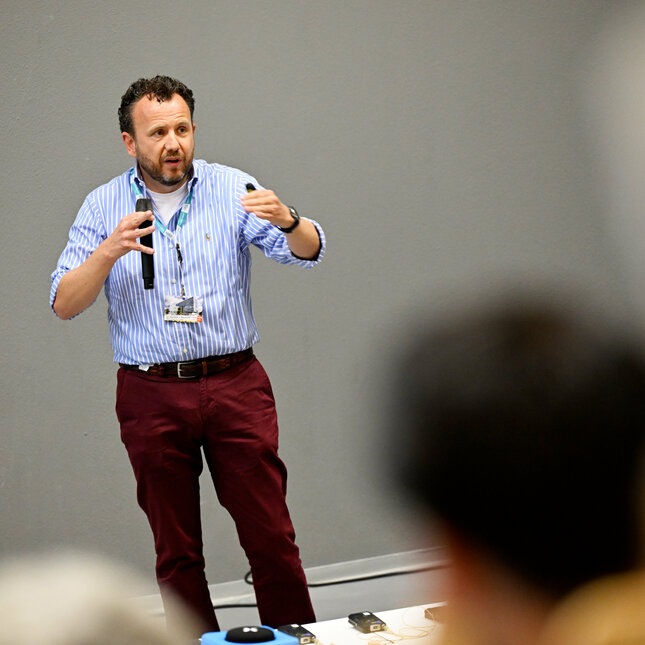
Improving the odds for premature babies
Babies that are born weeks or even months before they should be, need monitoring and support in their development. But current means and methods disrupt that development for up to years after their hospital stay. Because they are so fragile, physical contact is limited and current monitoring methods are quite invasive. And then there’s the surrounding: a hospital is a source of constant sounds and lights. These babies may recover physically, but their sleep patterns can become severely disrupted, causing all kinds of developmental issues.
Medical engineer Carola van Pul is working on a system that uses motion as a measure of wellbeing and health. She is testing and improving a prototype of a fiberglass-based mat, filled to the brim with sensors and other technology that help monitor movement. This project is a shining example of how cooperation helps speed up and improve research. She conducts her research together with medics and experts at the Maxima Medical Center, which was represented by neonatologist Hendrik Niemarkt. Carola shared their results from the testing period and explained how they intend to improve on their idea, using the data they gathered so far.
Hendrik made a clear case for the creation of different monitoring methods, preferably the kind that can, at some point, be deployed at home. That last goal is what Carola and her team are striving for. Imagine that, in a few years, these vulnerable infants can go home as quickly as possible, be touched and even cuddled by their parents and recover from a bad start in life in a much more child-friendly environment. This mat, matched with AI and equipped with a real-time connection to attending physicians, can help make that dream a reality.
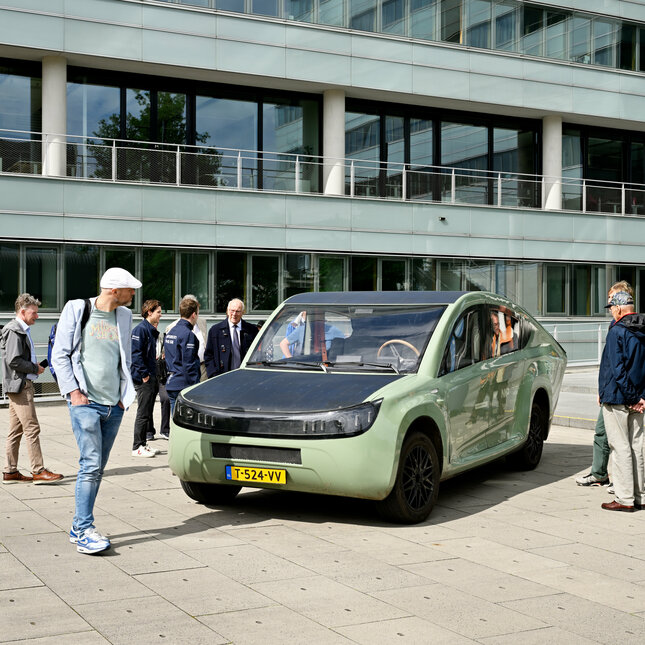
The ultimate form of independent mobility
The off-road car. A type of vehicle that was never considered to be turned into an EV. And, while many said it would be impossible, this was exactly what Team Solar set out to achieve: an electric off-road vehicle that would not need charging points. Because it would charge itself from the sun. Their presentation showed that it worked and then some. The Stella Terra is robust and very well-equipped electric vehicle. It is large, but despite its size it has a range of over 600 kilometers. To set the bar even higher for themselves, the team wanted to get the Stella Terra approved for use on public roads. They succeeded in doing that, so if you’re ever on the highway and you see a huge, light green car overtaking you, it could be the Stella Terra.
A few members of the team parked the car outside the Impact Night venue and answered questions from visitors. During their presentation they took us along on the adventure of designing, building and test-driving this exceptional car. They started off by showing the evolution of EV’s designed by Team Solar: from a model that was clearly built for the purpose of winning solar races, to the Stella Terra. To create and ‘bake’ some of its fiberglass panels, they had to construct their own oven from a sea-shipping container and industrial heat sources. To monitor this process, team members had to sleep at their production facility for days.
The crown on their work was test-driving the Stella Terra a whopping 1000 km, from northern Morocco to the Sahara. Despite some challenges, they were successful. For this team, the journey has now ended. A new generation of future engineers from many different disciplines is waiting to take over. The Stella Terra will not go into production. Instead, it will be promoted and shown during events to inspire the public and car manufactures. This car is living proof that, with enough imagination and motivation, there is no limit to what can be achieved in mobility. No matter how many experts claim otherwise.
